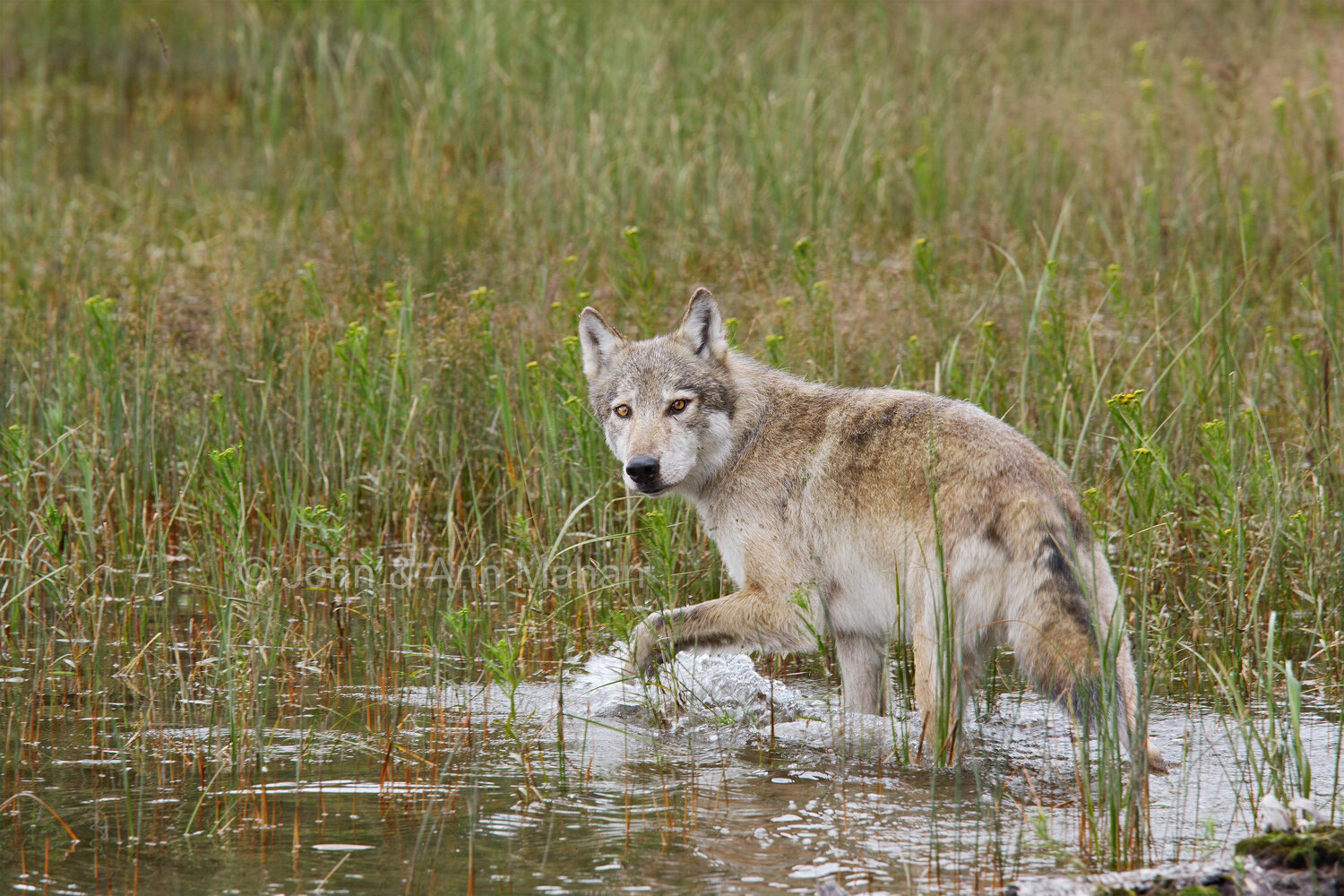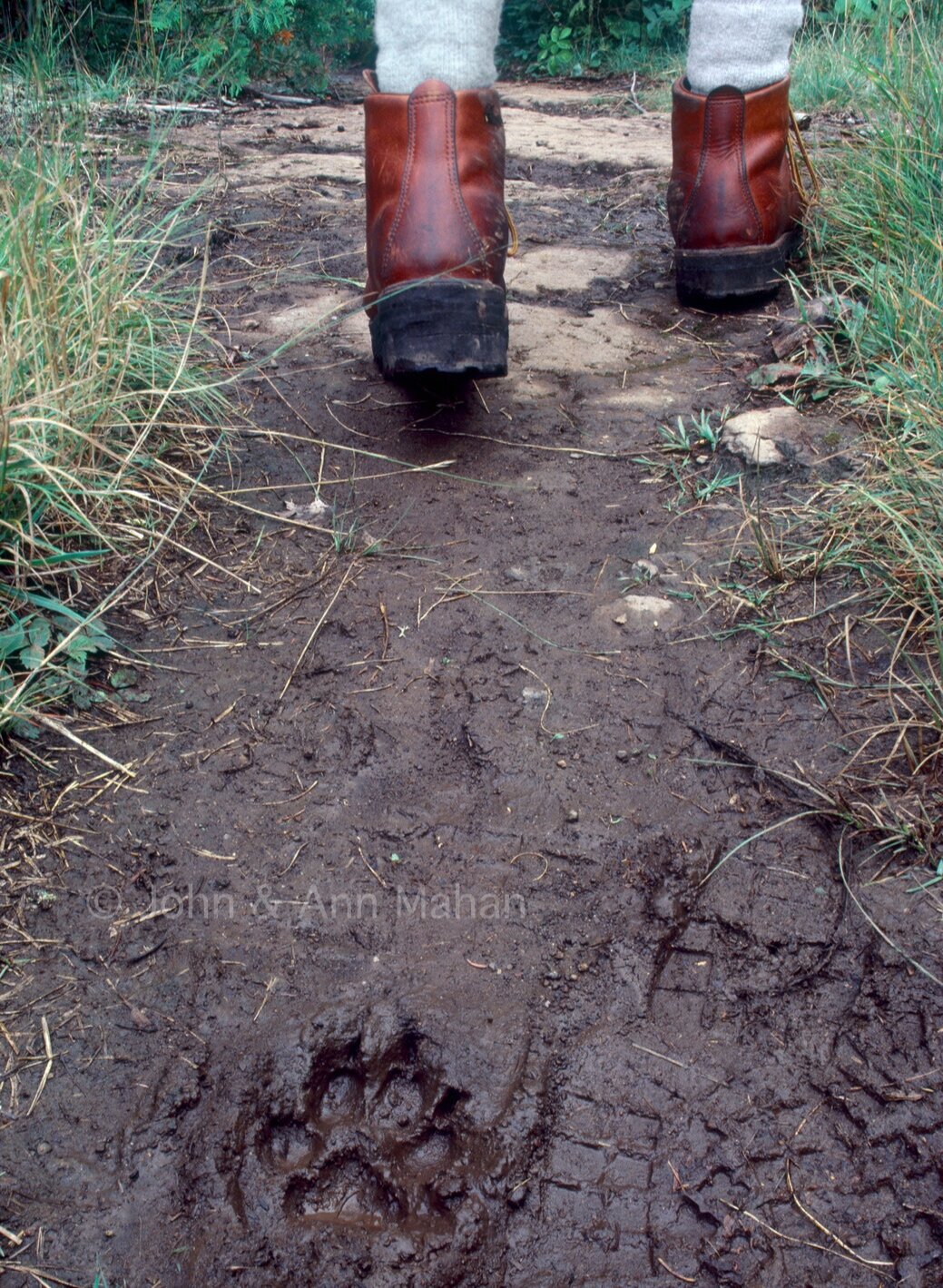
Isle Royale National Park
After many journeys to Isle Royale, we feel strongly connected to the wilderness of this island national park. Even with our first arrival on the island in 1984, we felt a strong sense of "coming home". Over the years our Isle Royale adventures have been primarily family experiences, as we shared them with our daughters and parents. The following information is an excerpt from our book, Lake Superior: Story and Spirit, and all images are from Isle Royale.
The shape of Lake Superior has been described as resembling a wolf's head: its nose in Duluth/Superior, the top of its head in the Nipigon area. The eye of the wolf is the lake's largest island, Isle Royale. It is a place apart, separated from the mainland by a minimum of 14 miles (22.5 km) of freshwater. Officially owned by Michigan but lying closer to Minnesota and Ontario, Isle Royale belongs more to the waters that embrace it than to the claims of humans.
The eye of the wolf has carried the spirit of the wolf for nearly a half century now, and it has gained international attention because of this presence. A pack of timber wolves reached the island by an ice bridge in the late 1940s, and in 1958 Durward Allen began a predator-prey study of wolves and moose on Isle Royale. This study, which has become the longest running study of its type, has been under the direction of Rolf Peterson since 1975. Because of its isolation, the island has served as an excellent natural laboratory for this and other studies. According to Peterson, a great advantage to studying the natural regulation of wolf and moose populations on Isle Royale is that neither wolves nor moose are hunted there, which is rare in the world.
As the wolf has become a symbol of disappearing wildness in our world, the mystique of Isle Royale and its wolves has grown. Writers describe journeys to Isle Royale filled with hopes, and fear, of seeing a wolf. Groups organizing trips to Isle Royale advertise the possibilities of observing wolves in the wild. But the truth is that very few park visitors catch even a fleeting glimpse of a wolf. Even park rangers have spent many seasons on the island without such luck. And so visitors initially arrive eagerly watching for wolves, rarely see them, and yet return again and again. Although Isle Royale is one of the least-visited national parks, its return rate is exceptionally high. So what is the enduring attraction? Isle Royale is more than just wolves and moose, more than just another pretty place. It is a special, total experience -- of becoming immersed in the sights, sounds, smells, and rhythms of daily life on the island.
Isle Royale is not quite like any other outdoor/wilderness experience. The first and most obvious difference is the four- to six-hour trip across Lake Superior on one of the passenger boats serving the island, from Grand Portage, Minnesota, or from Houghton or Copper Harbor, Michigan. The journey imparts a sense of Isle Royale's isolation from the mainland and aids in the psychological "letting go" of the daily concerns and pressures we leave behind. As the mainland fades from view, so do our memories of the race pace of "civilized" life. With Lake Superior's horizon stretching before us, we contemplate the vastness of the largest, coldest, and deepest of the Great Lakes.
It is the same endless horizon that was seen by copper-seeking native people who crossed the inland sea by canoe 5,000 years ago. The French named it Isle Royale; they placed it on their earliest maps, and then lost the island to the British. Ben Franklin bargained Isle Royale into United States territory in 1783, because of its reputation for rich copper deposits. Copper miners, logging companies, and commercial fishermen came and went. During Isle Royale's "resort era" of the early 1900s, tourists clad in white suits and frilly dresses came and went. As Jeff Rennicke wrote in Isle Royale: Moods, Magic, & Mystique: "Each dream of taming Isle Royale came up hard against realities -- thin soils, a short growing season, hard rock, the stormy lake, and perhaps most important, the sheer remoteness of this place." Established as a national park in 1940, Isle Royale has been allowed to revert to wilderness, where park visitors come to know the island's most valuable and enduring resource -- the intimacy and redemption of an island wilderness experience.
Isle Royale National Park encompasses an archipelago of more than 200 islands, ranging from tiny islets nearly barren of vegetation from the pounding of wind and wave, to the main island that is roughly 45 miles (72 km) long by nine miles (14 km) wide. The park is accessible only by boat or seaplane; once on the island, travel is only by foot or boat. Backpackers traverse the ridge and valley topography over 170 miles (274 km) of trails. Canoe portage routes lead to inland lakes where no motors are allowed. Canoeists, kayakers, sailboaters, and powerboaters explore the many coves and bays of the fjord-like Lake Superior coastline.
Ninety-nine percent of the park's land is legally designated wilderness, but the Isle Royale experience is not limited to backcountry travelers. Visitor information centers and interpretive programs are available on each end of the island, at Windigo and Rock Harbor. Rock Harbor Lodge and Housekeeping Cabins provide overnight and dining accommodations for those who prefer to explore on a day-trip basis. A variety of day hikes are possible directly from the Rock Harbor complex, and excursion boats provide additional accessibility for day hikers to see several lighthouses, a historic commercial fishery, and trails that reveal inland lakes and bogs, boreal forests, ridge tops with open views, and offshore islands.
Even though more people visit Yellowstone National Park in a day than visit Isle Royale in a year, 22,000 annual visitors, no matter how appreciative, can still take their toll on the island's fragile ecosystem. Thus, park regulations limit group sizes, length of stay at campsites, use of fire, etc. All campers and boaters must register before heading into the backcountry, and they should be prepared to boil or filter drinking water to prevent exposure to the eggs of the tapeworm Hydatid, and other pathogens. And pets are not allowed in the park, not even on boats, for the long-isolated wildlife can be especially susceptible to newly introduced diseases. Canine parvovirus is suspected to have played a significant role in the high mortality of Isle Royale wolves in the late 1980s and early 1990s.
This isolation is not complete, however. When the wind blows from the northwest, the odor of Thunder Bay's paper mills drifts across the island. When we sit at an overlook above Siskiwit Lake, we recall this is where Wayland Swain first made the connection between local pollution and distant sources. And we recall that airborne pollution carried on global currents reaches Lake Superior from such faraway places as Mexico, the American Southwest, and distant countries using toxic chemicals that we have banned but still allow to be exported. Research on Isle Royale continues to document how pervasive the effects of human industrial activities are on even such a remote wilderness island. And so Isle Royale teaches us not only of the values of wilderness, but also that there is no escaping our mistakes.
The physical isolation that the lake affords does bring advantages that make Isle Royale unique. There are no poisonous insects, no poison ivy to speak of, and no black bears to raid campers’ food supplies (but do beware of smaller camp thieves, squirrels and foxes).
With no city lights to dim the view of night skies, stars shine brilliantly and ephemeral auroral displays colorfully dance and pulsate. The wildlife species that are on the island exist in more concentrated numbers and have become accustomed to the human presence. Thus, Isle Royale offers the exceptional opportunity to see its wildlife residents going about their daily activities.
Moose and wolf tracks found in damp sections of trails remind us that we are on a shared path with our fellow creatures. On Isle Royale more than any other place we have experienced, frequent encounters with other life-forms remind us of our common bonds. We have watched fox kits playing together, a cow moose swimming with her small calf on her back, and osprey feeding their young. Drifting silently by canoe, we eavesdropped on a mother beaver and her young inside their lodge. And sometimes we are not the only observers: loons, beaver, otter, and fox watch us and even approach curiously. Early one morning at Daisy Farm Campground, we saw a cow moose stroll from campsite to campsite, looking in tents and shelters. As we relaxed in our tent one evening at Lake Desor, a huge moose face suddenly appeared nearly against the screen door, peering in at us.
Without question, the most adrenaline-stirring encounters are those with moose, as their size engenders awe and respect. At first glance, they appear awkward and gangly, as if they had been put together by a committee; but they are excellent swimmers and can move quickly and quietly through the forest. Fortunately, they are usually tolerant of human intrusions into their world. Moose sometimes wander right through the Rock Harbor complex, startling occasional visitors who round a corner and find themselves face to face with...Bullwinkle.
Isle Royale is a community of life-forms, a unique blend of species whose interactions can produce unusual events. Ann wrote in her journal on the final morning of one trip:
"I rose at 6 a.m. and wandered around Rock Harbor, hoping for a last glimpse of a moose or fox. Approaching one of the paved walkways, I spotted a fox, which trotted past me and out of sight. Suddenly it reappeared, backtracking and looking back as if concerned about something down the trail. And then the huge form of a cow moose appeared, slowly plodding along the same path. The fox appeared frightened, but then turned and approached the moose, who hesitated as they nearly touched noses. With seeming joyful relief, the little fox bounced and twirled in front of the ever-trudging moose. And so the oddest procession I've ever seen continued on down the path until they all disappeared from view: a playful fox trotting ahead of a lumbering moose, and behind them -- a small crowd of people, with cameras clicking."
While such peculiar parades occasionally move along the paved walkways of the Rock Harbor complex, it is the solitude of Isle Royale's backcountry that most deeply touches our souls. One starry night we stood on a rock outcrop overlooking an inland lake that was a mirror of stars and northern lights. Auroral beams glowed overhead, pulsating upward, higher and higher toward the zenith of the sky, until it seemed we could almost hear and feel the energy in the heavens. In the distance a loon wailed, its simple melody drifting across the lake and echoing from surrounding ridges. Nearby, a moose splashed, bubbled, and snorted as it fed. In that breathless moment of perfection time seemed to stand still; and then a large owl passed silently overhead, its form silhouetted against a sky brimming with shimmering stars and lights.









